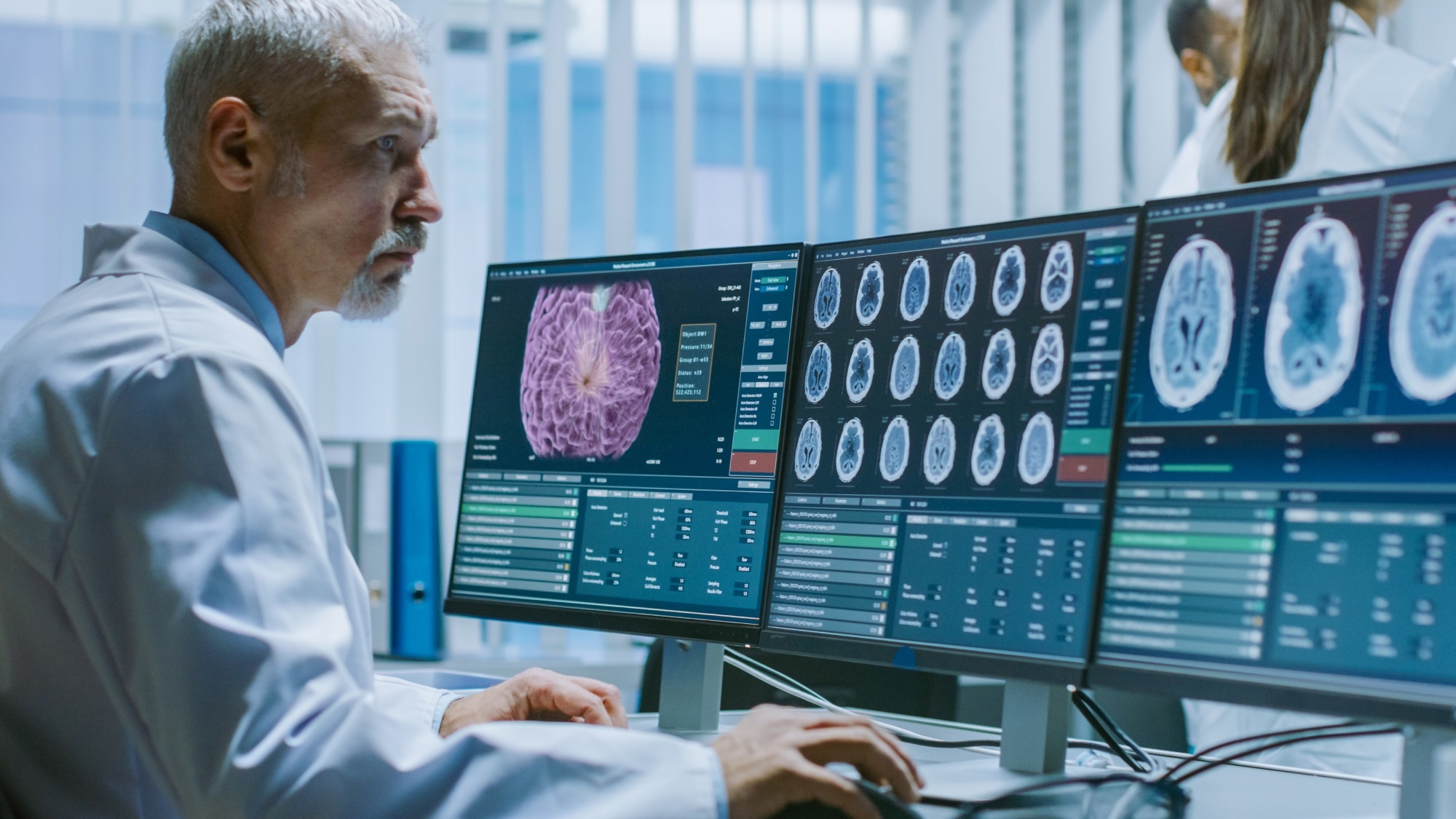Different types of nanomaterials have been used in neuroscience, including two-dimensional (2D) nanomaterials widely known for their unique structures and physicochemical properties. In a recent Journal of Nanobiotechnology review, scientists discuss the applications of 2D nanomaterials in neuroscience.
 Study: Biomedical application of 2D nanomaterials in neuroscience. Image Credit: Gorodenkoff / Shutterstock.com
Study: Biomedical application of 2D nanomaterials in neuroscience. Image Credit: Gorodenkoff / Shutterstock.com
Types of 2D nanomaterials
The thickness of 2D nanomaterials is typically between one or more atomic layers, wherein electrons move freely in the other two dimensions beyond the nanoscale of less than 100 nanometers (nm). These materials exhibit superior biological and physiochemical properties and have been applied in regenerative medicine and tissue engineering.
Some common types of 2D nanomaterials include graphene, layered double hydroxides (LDHs), black phosphorous (BP), transition metal carbides (TMCs), and transition metal dichalcogenides (TMDCs). Many of these nanomaterials are used in neuroscience, particularly for neuroinflammatory reduction, injured neural cell/tissue repairment, synaptic modulation, and stem cell fate regulation.
Graphene, the first discovered 2D nanomaterial, comprises carbon atoms covalently bonded in a hexagonal lattice. Several functionalized forms of graphene-based nanomaterials (GBNs) have been developed, of which include carboxyl graphene, graphene oxide (GO), and reduced GO (RGO).
Another 2D nanomaterial that has recently gained much attention is TMDC. The generalization formula of TMDCs is MX2, where M is the transition metal atoms sandwiched between two layers of chalcogen atoms (X). In 2014, scientists discovered 2D BP, which consists of stable allotropes of phosphorus that are collectively between one and two nm thick.
LDHs interact with organic molecules through the anionic exchange, which is characterized by a phenomenon known as intercalation. This nanomaterial is chemically stable with pH-dependent biodegradability.
Applications of 2D nanomaterials in neuroscience
Different types of 2D nanomaterials have been applied in various aspects of neuroscience, such as neural repair, synaptic stimulation, neurodegenerative diseases (NDs), and glioma.
Neural repair and regeneration
The nervous system has a poor ability to regenerate axonal connections after injury or disease. In addition, it is difficult for drugs to reach damaged areas through the blood-brain barrier (BBB).
Recently, 2D nanomaterials have been extensively explored for their therapeutic potential, particularly in neural repair and regeneration. Since GBNs exhibit significant electrical conductivity and good biocompatibility, they are excellent candidates for neural tissue engineering.
Graphene substrate has been used as cell scaffolds with optimal electrical stimulations. Furthermore, graphene substrates have been shown to support cell adhesion and promote cell proliferation. Poly (lactic-co-glycolic acid) (PLGA) nanofiber pads coated with GO and methylene blue (MB) improve the ability of neural progenitor cells (NPCs) to counter disease stressors.
Synaptic simulation
Moreover, 2D nanomaterials have been used in the development of artificial synaptic devices that possess optoelectronic, electronic, electrochemical, and mechanical properties.
Graphene, coupled with other materials, forms heterogeneous structures that function as artificial synapses. For example, graphene/tantalum pentoxide/graphene phototransistor exhibits synapse characteristics visible under electromagnetic radiation.
NDs
NDs are chronic diseases characterized by neuronal degeneration and myelin damage, which cause cognitive impairment and morbidity in older adults. Three major types of NDs include Parkinson’s disease (PD), Alzheimer’s disease (AD), and Huntington’s disease (HD), all of which are associated with protein aggregation or misfolding.
Previously, 2D nanomaterials have been used for the early diagnosis and subsequent treatment of NDs. Nickle aluminide LDHs combined with graphene monolayers are used to track dopamine (DA) in neuronal cells in real-time to support DA-based PD diagnosis.
Prussian blue nanoparticle-supported Molybdenum disulfide nanocomposites are also considered a potential DA probe. BP tagged with brain-targeting ligand lactoferrin and loaded with Paeoniflorin has also been used in PD treatment.
LHD scaffolds with short interfering ribonucleic acid (siRNA) promote the ability of siRNAs to target and destroy specific messenger RNAs (mRNAs), which can be used for the treatment of HD. In addition, GO has the capacity to enhance the clearance of mutant huntingtin (Htt) that contributes to HD pathogenesis.
Traumatic diseases
Two leading causes of mortality and morbidity linked to trauma in the central nervous system (CNS) are traumatic brain injury (TBI) and spinal cord injury (SCI).
TBI is associated with brain injury caused by an external mechanical force that might cause temporary or permanent brain impairment. Biodegradable mesoporous silicon nanoparticles encapsulated with GO nanosheets have been developed to transport therapeutic siRNA and effectively silence targeted genes.
SCI has been associated with damage in the spinal cord that could result in varying degrees of quadriplegia or paraplegia. PLGA/GO has been designed to carry brain-derived neurotrophic factor (BDNF) and insulin-like growth factor 1 (IGF-1), which could provide protection to NSCs from oxidative stress. In addition, GO has been deemed the primary nanomaterial for SCI treatment.
Glioma
Glioma, a common craniocerebral tumor caused by the malignant transformation of glial cells in the spinal cord and brain, accounts for about 80% of all malignant brain tumors. Recently, 2D nanomaterials have been proposed for treating and diagnosing gliomas. BP, for example, has superior light absorption characteristics and has been used in photothermal therapy (PTT) of cancers, including glioma.
Journal reference:
- Li, K., Ji, Q., Liang, H., et al. (2023) Biomedical application of 2D nanomaterials in neuroscience. Journal of Nanobiotechnology 21(181). doi:10.1186/s12951-023-01920-4